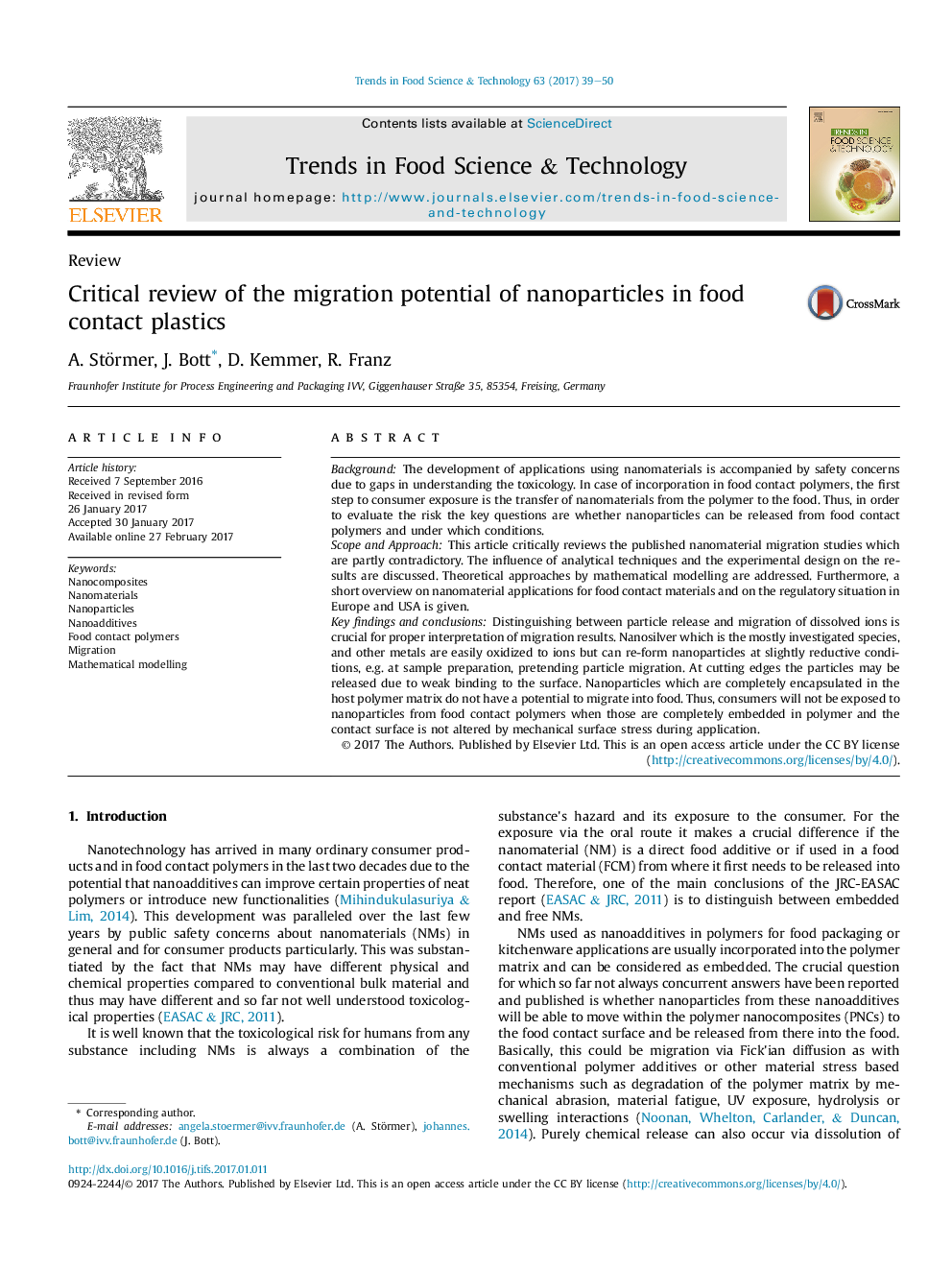| Article ID | Journal | Published Year | Pages | File Type |
|---|---|---|---|---|
| 5523670 | Trends in Food Science & Technology | 2017 | 12 Pages |
â¢Critical review of approx. 20 studies on the migration potential of nanomaterials.â¢Nanosilver is a critical, redox-sensitive test system.â¢Non-migration of nanomaterials if fully covered with polymer.â¢Migration modelling shows nanomaterials are immobilized in a polymer matrix.
BackgroundThe development of applications using nanomaterials is accompanied by safety concerns due to gaps in understanding the toxicology. In case of incorporation in food contact polymers, the first step to consumer exposure is the transfer of nanomaterials from the polymer to the food. Thus, in order to evaluate the risk the key questions are whether nanoparticles can be released from food contact polymers and under which conditions.Scope and ApproachThis article critically reviews the published nanomaterial migration studies which are partly contradictory. The influence of analytical techniques and the experimental design on the results are discussed. Theoretical approaches by mathematical modelling are addressed. Furthermore, a short overview on nanomaterial applications for food contact materials and on the regulatory situation in Europe and USA is given.Key findings and conclusionsDistinguishing between particle release and migration of dissolved ions is crucial for proper interpretation of migration results. Nanosilver which is the mostly investigated species, and other metals are easily oxidized to ions but can re-form nanoparticles at slightly reductive conditions, e.g. at sample preparation, pretending particle migration. At cutting edges the particles may be released due to weak binding to the surface. Nanoparticles which are completely encapsulated in the host polymer matrix do not have a potential to migrate into food. Thus, consumers will not be exposed to nanoparticles from food contact polymers when those are completely embedded in polymer and the contact surface is not altered by mechanical surface stress during application.
